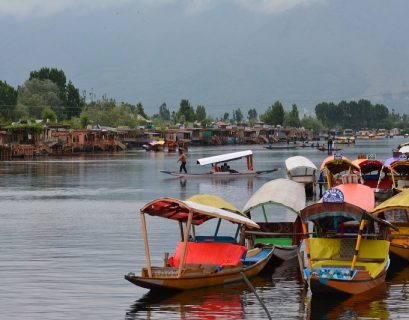Traveling is one of the most enriching experiences, opening doors to new cultures, food, and people. However, the environmental and social impact of travel is hard to ignore. From excessive carbon emissions to over-tourism, travel can take a toll on the planet. Fortunately, sustainable travel is on the rise, encouraging travelers to explore responsibly. In this guide, we’ll share practical tips on how you can embark on unforgettable adventures while minimizing your environmental footprint.
1. Choose Eco-Friendly Destinations
Some places are more committed to sustainability than others. Look for countries or cities known for their eco-initiatives, such as energy-efficient accommodations, waste management programs, and eco-tours.
Eco-friendly travel spots to consider:
- Bhutan (with its carbon-negative policy)
- Iceland (promoting renewable energy)
- Costa Rica (a leader in ecotourism)
When planning your trip, also research less tourist-heavy destinations. Visiting landmarks in Pakistan, for instance, offers incredible cultural experiences without overwhelming tourism, making it a great choice for eco-conscious travelers.
2. Opt for Sustainable Accommodation
Hotels and resorts have a significant environmental impact, but more eco-conscious properties are emerging. Look for accommodations with green certifications like LEED or EarthCheck, which ensure energy-efficient practices.
Sustainable lodging ideas:
- Stay in locally-owned guesthouses to support communities.
- Choose eco-lodges that use renewable energy.
- Book hotels with water-saving measures and waste reduction programs.
Additionally, consider booking longer stays in one place rather than jumping from one location to another to reduce your carbon footprint.
3. Minimize Air Travel and Offset Carbon Emissions
Flying is one of the biggest contributors to carbon emissions. If possible, choose trains, buses, or carpooling options for shorter distances. When flying is unavoidable, offset your carbon emissions by contributing to environmental projects. Many airlines now offer carbon offset programs, or you can support reforestation initiatives directly.
Travel smarter:
- Take non-stop flights when possible, as takeoffs and landings generate the most emissions.
- Pack light to reduce the plane’s fuel consumption.
- Travel slower by staying longer in destinations to minimize your overall flights.
4. Support Local Economies
One of the pillars of sustainable travel is contributing to local economies. Wherever you go, shop from local markets, dine at family-owned restaurants, and participate in cultural activities led by locals. Your spending supports communities and promotes sustainable tourism development.
Examples of responsible spending:
- Buy handmade souvenirs from artisans.
- Use local guides for tours.
- Visit community-run attractions and projects.
The goal is to immerse yourself in the culture while leaving a positive impact on the place and its people.
5. Reduce Plastic Waste and Be a Responsible Traveler
Plastic pollution is a global issue, and travelers can unknowingly contribute to it. Many tourist hotspots struggle with waste management, so reducing your waste while traveling makes a difference.
Simple steps to reduce waste:
- Carry a reusable water bottle and refill it wherever possible.
- Use cloth bags instead of plastic ones.
- Bring reusable utensils and containers for snacks or meals.
Additionally, avoid littering, respect wildlife, and follow the “leave no trace” principles to ensure you leave places better than you found them.
6. Choose Eco-Friendly Activities
Adventure is a big part of travel, but not all activities are environmentally friendly. Activities like animal rides, motorized water sports, or poorly regulated tours can harm the environment. Opt for eco-conscious alternatives like hiking, birdwatching, or kayaking.
Eco-friendly activities to try:
- Take a guided hike through nature reserves.
- Go snorkeling in marine-protected areas.
- Explore cities through bike tours or walking tours.
Before booking any tours or excursions, research the company’s environmental practices and ethical guidelines.
7. Travel During Off-Peak Seasons
Over-tourism can damage popular tourist destinations, harming the environment and displacing locals. To travel more sustainably, consider visiting places during off-peak seasons. This reduces your impact on crowded sites and allows you to experience the destination more peacefully.
Benefits of traveling off-peak:
- Cheaper accommodation and fewer crowds.
- Less strain on local infrastructure and resources.
- A more relaxed and authentic travel experience.
8. Learn and Spread Awareness About Sustainable Travel
Educating yourself about the impact of tourism helps you make conscious decisions. As you practice sustainable travel, share your knowledge with others. Talk about your experiences with family and friends, post about it on social media, or write reviews encouraging others to travel responsibly.
Being an advocate for sustainable tourism can inspire more people to make mindful choices, creating a collective movement toward a greener future.
Conclusion
Sustainable travel doesn’t mean giving up on adventure or luxury; it’s about exploring the world with a sense of responsibility. By making small, thoughtful choices—like supporting local businesses, minimizing waste, and traveling during off-peak seasons—you can enjoy meaningful travel experiences without harming the planet. So, the next time you plan a trip, consider incorporating these sustainable practices to ensure your journeys are as rewarding for the places you visit as they are for you.













